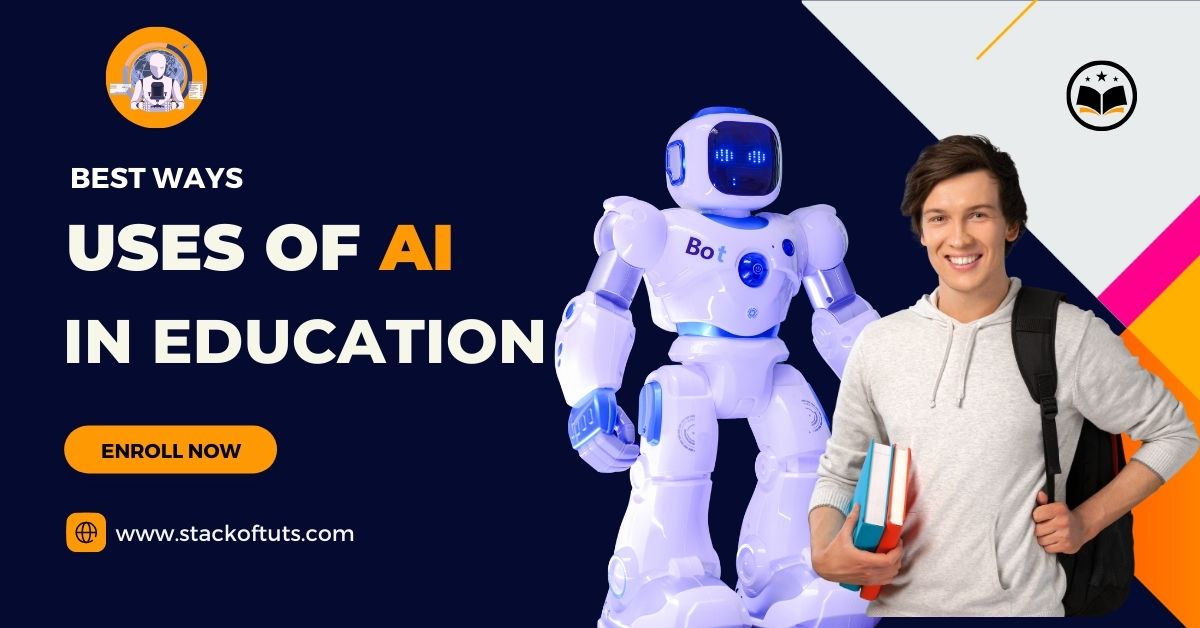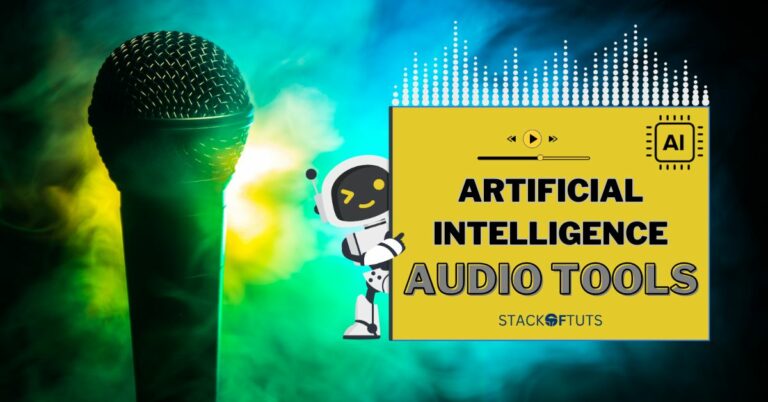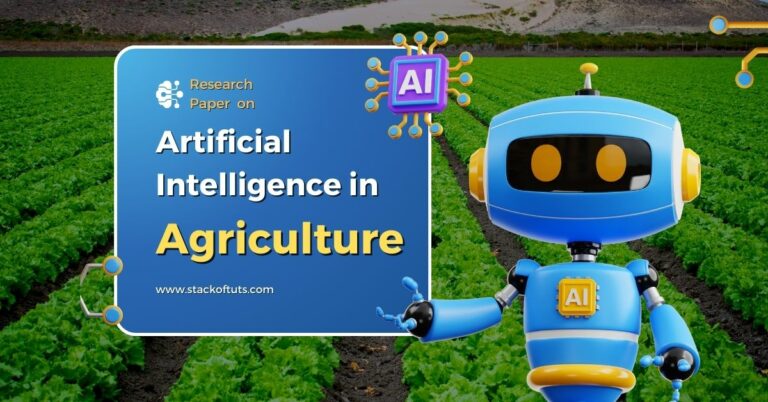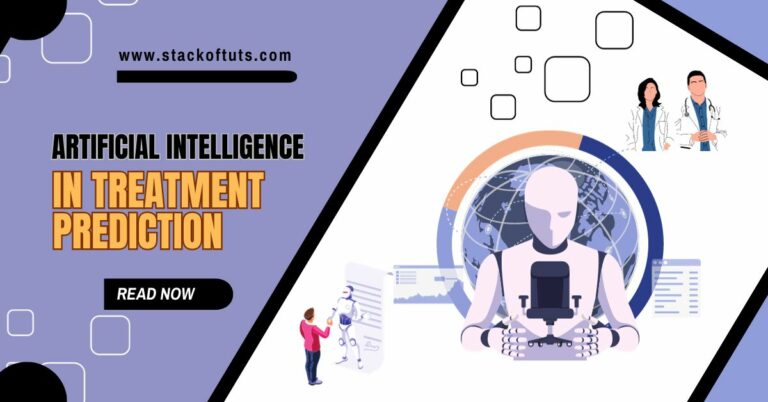
The digital revolution has changed every facet of society, altering industries and redefining standards as a result of technological progress. These shifts will have far-reaching effects on several industries, including education, with 2024 serving as a watershed year. The advent of AI has been a game-changer, altering the face of classroom instruction, student learning, and back-end administration. In this comprehensive guide, we explore the multifaceted uses of AI in education in 2024.
For a complete guide also read about Artificial intelligence used in Education dive into this link for exclusive insights and captivating discoveries!
12 Best Ways Uses of AI in Education 2024

With the relentless technological advancements, Artificial Intelligence (AI) has seamlessly interwoven itself into various sectors, including education. As we gaze into the horizon of 2024, AI continues to redefine the landscape of education, making learning more accessible, efficient, and personalized. Below, we’ll delve into 12 prominent ways AI is being employed in educational institutions, enhancing both teaching and learning experiences.
1. Personalized Learning

AI-driven platforms have the potential to assess individual learning patterns and preferences. This paves the way for personalized learning experiences. With AI’s ability to analyze a student’s strengths, weaknesses, and pace, it can curate content tailored to each learner, ensuring that they grasp concepts at their own rhythm.
2. Automated Grading

Gone are the days when educators had to spend endless hours grading assignments. Automated grading systems harness AI to assess student submissions, giving educators more time to focus on instruction and student interaction. These systems are not only faster but also reduce human error and bias.
3. Real-time Feedback

Immediate feedback is paramount for enhanced learning. AI-driven platforms can provide students with real-time feedback, helping them identify areas of improvement instantaneously. This accelerates the learning curve and fosters a proactive approach to addressing weaknesses.
4. Adaptive Learning

Adaptive learning systems employ AI to adjust content in real time, aligning it with the learner’s needs. As students interact with the platform, it reshapes the content, ensuring optimal challenge levels and engagement.
5. Virtual Tutors

With AI, students can access virtual tutors anytime, anywhere. These AI-powered assistants can provide clarifications, answer questions, and offer guidance, bridging the gap between traditional classroom sessions and self-study.
6. Language Learning

AI-driven language platforms are revolutionizing how individuals learn languages. With features like speech recognition and real-time translation, students can practice pronunciation and understand nuances, making language learning more interactive and efficient.
7. Special Education

AI has been a boon for special education. With tailored programs and interactive tools, it caters to the diverse needs of students with disabilities, ensuring inclusivity and equal opportunities for all learners.
8. Assessment

Regular assessment is crucial for gauging progress. AI-powered platforms provide comprehensive assessments, pinpointing areas of strength and those requiring attention. With detailed insights, educators can refine their teaching strategies for optimal outcomes.
9. Data Analytics

AI can offer invaluable insights into learning behaviors and trends by analyzing student data. Data analytics can guide educators in devising strategies, interventions, and curriculums that resonate with the student body’s needs.
10. Educational Research

AI is playing a pivotal role in educational research. By sifting through vast datasets, AI can identify patterns, predict trends, and offer insights that can shape future educational methodologies and curriculums.
11. Classroom Management

AI-driven tools aid teachers in classroom management, automating administrative tasks, tracking student participation, and ensuring a conducive learning environment.
12. Parent Engagement

Strengthening the bridge between educators and parents, AI platforms offer real-time updates on student performance, attendance, and behavior. This fosters greater parent engagement, ensuring a collaborative approach to education.
How is it expected to transform the way to teach and learn with AI?
AI in education will transform teaching and learning. AI is expected to change learning from a one-size-fits-all approach to individualized and adaptable. AI-driven platforms will let instructors personalize their lessons to each student’s learning style, speed, and weaknesses.
This lets teachers adapt classes to students’ individual and collective needs in real-time. AI will provide learners access to virtual teachers on demand, blurring the barriers between classroom and self-study. Live feedback and adaptive material will keep students interested and challenged at the correct level. AI in education signals a future of data-driven teaching and personalized learning.
The future of AI in education
AI will revolutionize education by making it more personalized and responsive. AI-integrated educational systems will lead to highly personalized learning paths that alter real-time information to student demands. Individualization guarantees that each student learns at their best speed, maximizing comprehension and retention. With virtual AI tutors, students will have 24/7 support, bridging the gap between classroom and personal study time.
Beyond personalizing, AI will revolutionize administrative activities like grading, attendance tracking, and curriculum development, allowing teachers to concentrate on teaching. AI-enabled education promises to be more efficient, inclusive, and personalized.
FAQs
AI in education will personalize learning experiences, automate grading tasks, and provide real-time feedback to students.
Uses of AI in Education 2024, AI will offer enhanced automation across industries, personalized user experiences, and breakthroughs in data-driven decision-making.
AI in education focuses on personalizing learning routes, streamlining administrative duties, and providing real-time feedback.
The future scope of AI in education includes tailored learning experiences, virtual tutor assistance, and data-driven classroom innovations.
Conclusion
In conclusion, as we tread into the Uses of AI in Education 2024, AI’s imprint on education is undeniable. From personalized learning experiences to efficient classroom management, AI is transforming education, making it more responsive, inclusive, and impactful. As educators and learners embrace these AI-driven tools and platforms, the future of education looks promising and vibrant.
Thanks!





